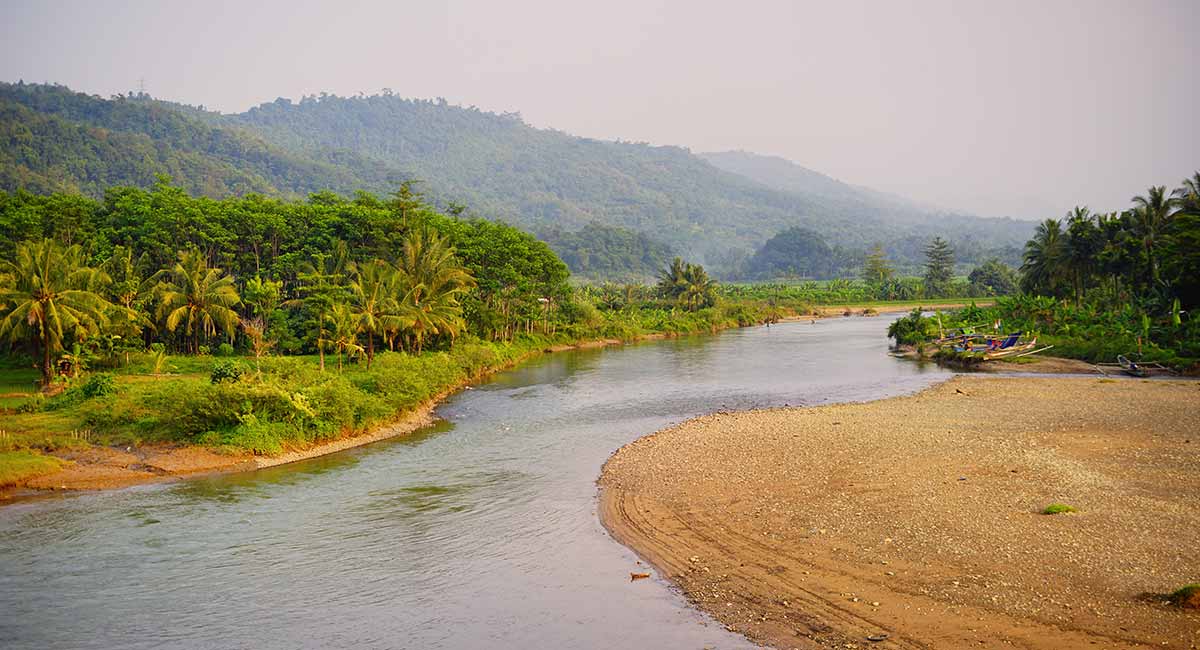Brahmani River – Lifeline of Eastern Odisha
Situated in the eastern state of Odisha, the Brahmani River is one of the state’s most significant and cherished water bodies. More than just a geographical feature, the Brahmani is deeply entwined with Odisha’s ecology, economy, and culture. Flowing through multiple districts and nourishing the land supports agriculture, industry, spiritual traditions, and biodiversity. This article examines the origin, path, tributaries, ecological and economic importance, cultural relevance, and the growing challenges this vital river system faces.
Origin and Path of the Brahmani River
The Brahmani River originates at Rourkela in Sundargarh district, where two rivers—the South Koel and the Sankh—merge to form its main stream. The South Koel River originates in the Jharkhand Plateau, while the Sankh River arises near the Chhattisgarh-Jharkhand border. After their confluence, the river takes the name Brahmani and flows entirely through Odisha.
Covering a length of approximately 480 kilometers, the Brahmani meanders through the districts of Sundargarh, Deogarh, Angul, Dhenkanal, Jajpur, and Kendrapara before finally meeting the Bay of Bengal near Dhamra. Notably, it joins with the Baitarani River before reaching the sea, forming a unique and ecologically significant estuarine system that includes mangroves, deltas, and wetlands.
Major Tributaries of the Brahmani River
The Brahmani River is strengthened by several tributaries along its course, which contribute to its volume and ecological richness. Among its essential tributaries are:
- Tikra River
- Samakoi River
- Kharasrota River
- Ramial River
- Birupa River (also a distributary of the Mahanadi)
Together, these tributaries drain an expansive basin area of 39,033 square kilometers, making the Brahmani the second largest river system in Odisha, following the Mahanadi.
Hydrological and Economic Importance
The Brahmani River is critical in Odisha’s economic and hydrological framework. It supports a variety of activities that sustain both rural and urban populations:
- Irrigation: The fertile plains of Odisha owe much of their productivity to the Brahmani’s waters. It irrigates vast tracts of farmland, particularly aiding the cultivation of paddy, the region’s staple crop.
- Industrial Use: The city of Rourkela, a central industrial hub, heavily relies on the Brahmani for water supply to its steel plants, thermal power stations, and other manufacturing units.
- Hydropower and Infrastructure: Several projects, including the Rengali Dam in Angul district, utilize the river for electricity generation, water regulation, and flood control. The Rengali Dam is one of Odisha’s key multipurpose dams, catering to agricultural and industrial demands.
Ecological and Biodiversity Significance
The Brahmani River holds substantial ecological value, especially as it converges with the Baitarani River and empties into the Bay of Bengal. This estuarine zone is ecologically sensitive and forms a crucial part of the Bhitarkanika National Park, one of India’s most significant Ramsar Wetlands. The delta and surrounding forests serve as habitats for:
- One of the biggest reptile predators in the area is the saltwater crocodile.
- Olive Ridley sea turtles, which nest along the coastline
- Extensive mangrove forests, which act as natural barriers against cyclones and tsunamis
- Numerous species of fish, migratory birds, and aquatic organisms
This biodiversity contributes to ecological balance and sustains inland and coastal fisheries, which are vital for the livelihood of thousands of families living in the river basin.
Cultural and Historical Significance
As with many rivers in India, local communities deeply revere the Brahmani. It features prominently in regional folklore, traditions, and religious practices. Several ancient temples and pilgrimage centers are along its banks, with towns like Dhenkanal and Rourkela developing around its influence.
The river is central to traditional festivals such as Kartika Purnima and Boita Bandana, during which devotees gather by the riverside to set afloat miniature boats, commemorating Odisha’s ancient maritime history. These practices symbolize the connection between people and water, representing journeys, trade, and the spiritual value of rivers.
Challenges Faced by the Brahmani River
The Brahmani River is becoming more and more endangered despite its priceless contributions because of a variety of anthropogenic and environmental stresses:
- Pollution
The rapid industrialization of areas like Rourkela and Talcher has led to significant discharge of untreated industrial effluents into the river. Combined with urban sewage and mining runoff, this has caused severe water quality degradation. High levels of heavy metals and toxins threaten aquatic ecosystems and human health.
- Reduced Flow
The growing demand for water, especially for industrial and irrigation use, has led to over-extraction and regulation of the river’s flow. During dry seasons, reduced water levels affect agriculture, wetlands, and downstream biodiversity, disrupting the natural cycle.
- Sand Mining and Encroachment
Unregulated and excessive sand mining along the riverbanks destabilizes the river’s course. It leads to erosion, destruction of natural habitats, and a decline in groundwater recharge, compounding the stress on both human and ecological systems.
- Climate Change
The Brahmani River watershed is experiencing temperature fluctuations, erratic rainfall, and a rise in the frequency of extreme weather events due to climate variability. These changes impact wetland health, river flow patterns, and the ecosystem’s overall resilience.
Final Thoughts
The Brahmani River is more than a flowing water body—it is a lifeline for eastern Odisha, shaping the land, culture, economy, and environment. From sustaining forests and wildlife to powering industries and irrigating fields, the river plays a central role in the state’s prosperity and identity.
However, as development pressures mount and ecological challenges grow, the Brahmani is at a critical crossroads. Protecting this river is not just about environmental stewardship—it is a social and cultural responsibility. Comprehensive conservation policies, pollution control, sustainable water management, and community participation are essential to ensure that the Brahmani continues to flow freely and fruitfully for future generations.
By embracing a vision of balance between development and ecology, Odisha can preserve the Brahmani as a natural resource and symbol of its enduring heritage and sustainable future.


